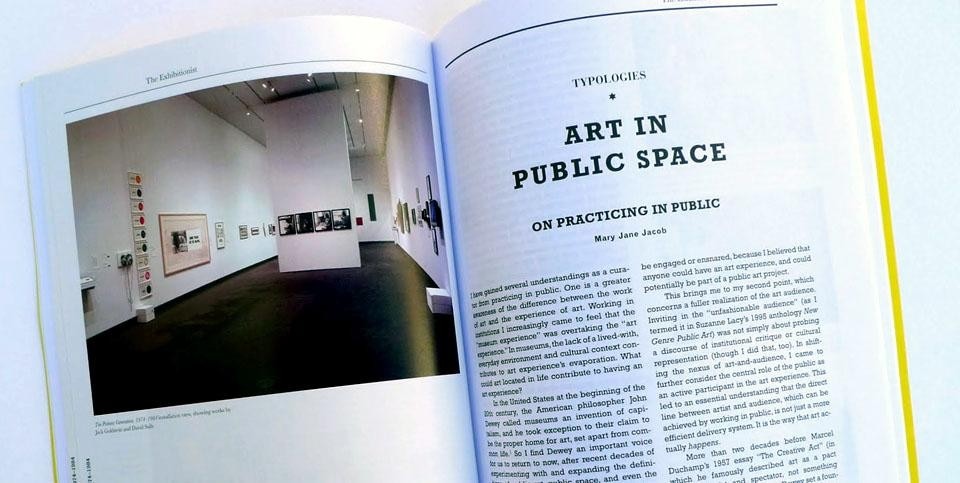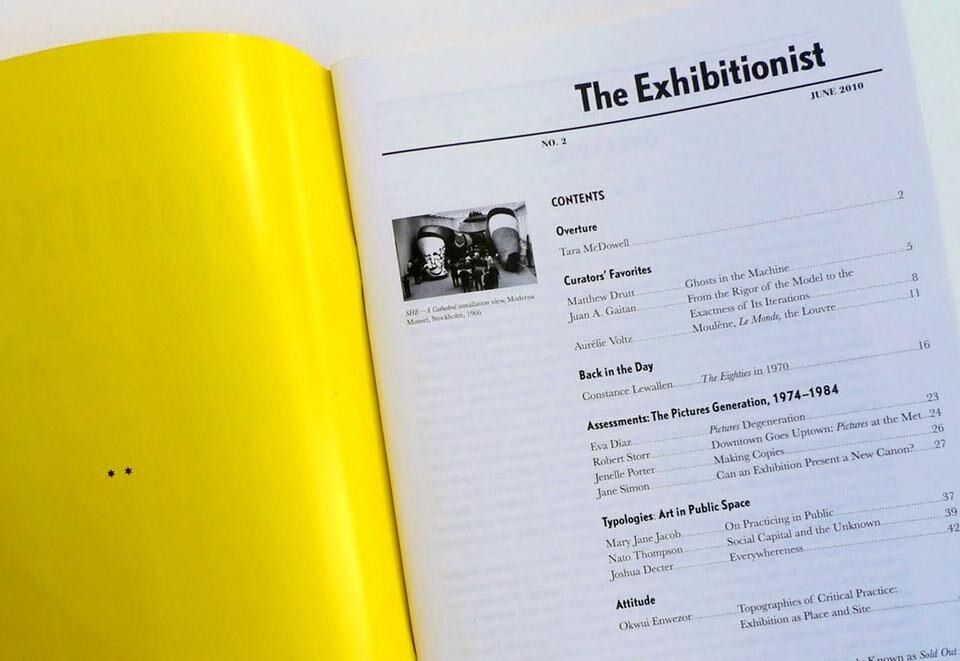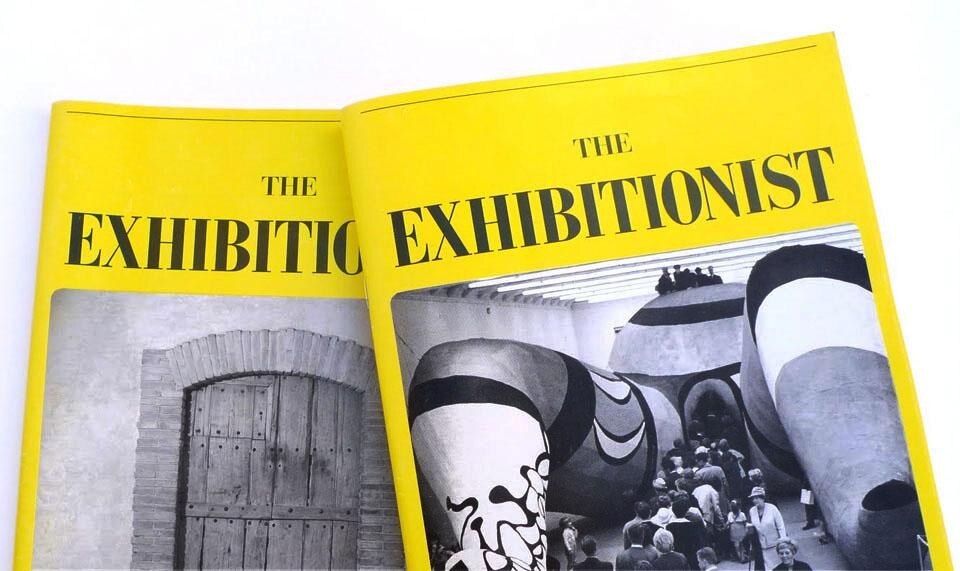"Little magazines are an excellent weather vane for new trends in a profession and an indicator of what may be the accepted ideas in the years to come." So reads the Journal of the American Institute of Planners description-blurb to Denise Scott Brown's "Little Magazines in Architecture and Urbanism" article published in their July 1968 issue. The following note, unlike DSB's witty description of European architecture and urbanism little magazines that sprung after WWII, makes a case for one contemporary little magazine: The Exhibitionist . "A new journal focusing solely on the practice of exhibition making." Because it is not often when a category within the table of contents branches out on its own.
Very much like architecture's little magazines, which are made by architects for architects, The Exhibitionist is "made by curators for curators." In a way, it could be seen as the "exhibitions" section of an art magazine—those usually crammed in the end pages, as if to solve a binding problem—but smart and free of gallery ads or senseless art party snaps. It's aims "to create a wider platform for the discussion of curatorial concerns, and actively contribute to the formation of a theory of curating."

Denise Scott Brown says that little magazines "[appear] when the debate has expanded enough to demand organization of a rudimentary reproduction and mailing system." In this sense, debate around curating has undoubtedly expanded over the last decade, but as The Exhibitionist editor Jens Hoffmann points out in the inaugural issue's overture, "the discipline has not, until now, had a consistent platform for more frequent and interconnected conversations that…bring together the many fragments of the current dialogue." He goes on by describing the aspect of exhibition practice The Exhibitionist is concerned with: "the creation of a display, within a particular sociopolitical context, based on a carefully formulated argument, presented through the meticulous selection and methodical installation of artworks, related objects from the sphere of art, and objects from other areas of visual culture."
In its two published issues, the 11th International Istanbul Biennial and The Pictures Generation, 1974–1984 exhibition have been exhaustively unpacked in Assessments through fundamentally different points of view. In "favorites," Jill Dawsey narrates a personal experience of Okwui Enwezor's influential The Short Century: Independence and Liberation Movements in Africa, 1945–1994 at P.S.1 in 2002. Chus Martinez writes about Documenta 12, Matthew Drutt chooses to discuss Pontus Hulten's controversial The Machine as Seen at the End of the Mechanical Age exhibition at MoMA in 1968, among others. So far, Typologies has addressed "The Solo Show" and "Art in Public Space," presenting opinions by Nato Thompson, Beatrix Ruf, Eungie Joo, etc.

This hard-to-find little magazine sets a high standard for further discussions on exhibition practice, and hopefully, if more readers come across it, future exhibitions will be approached with the seriousness they deserve. Not only curators, but exhibition-goers alike, could learn a lot from it.


